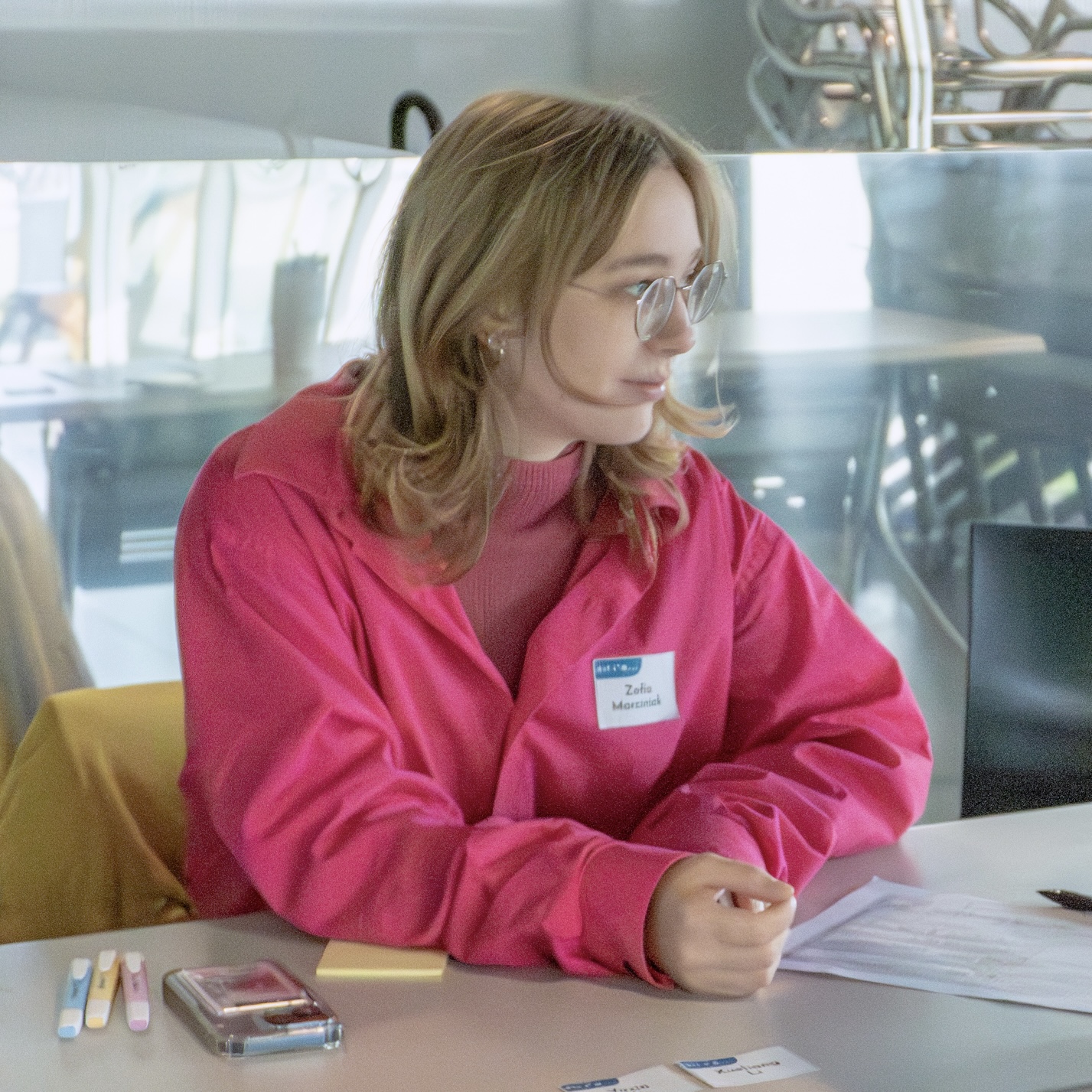Decoupling Geometry from Surface Finish by Parameterizing Texture Directly in G-code for Fused Deposition Modeling (FDM) Printing
Published in AODR, 2024
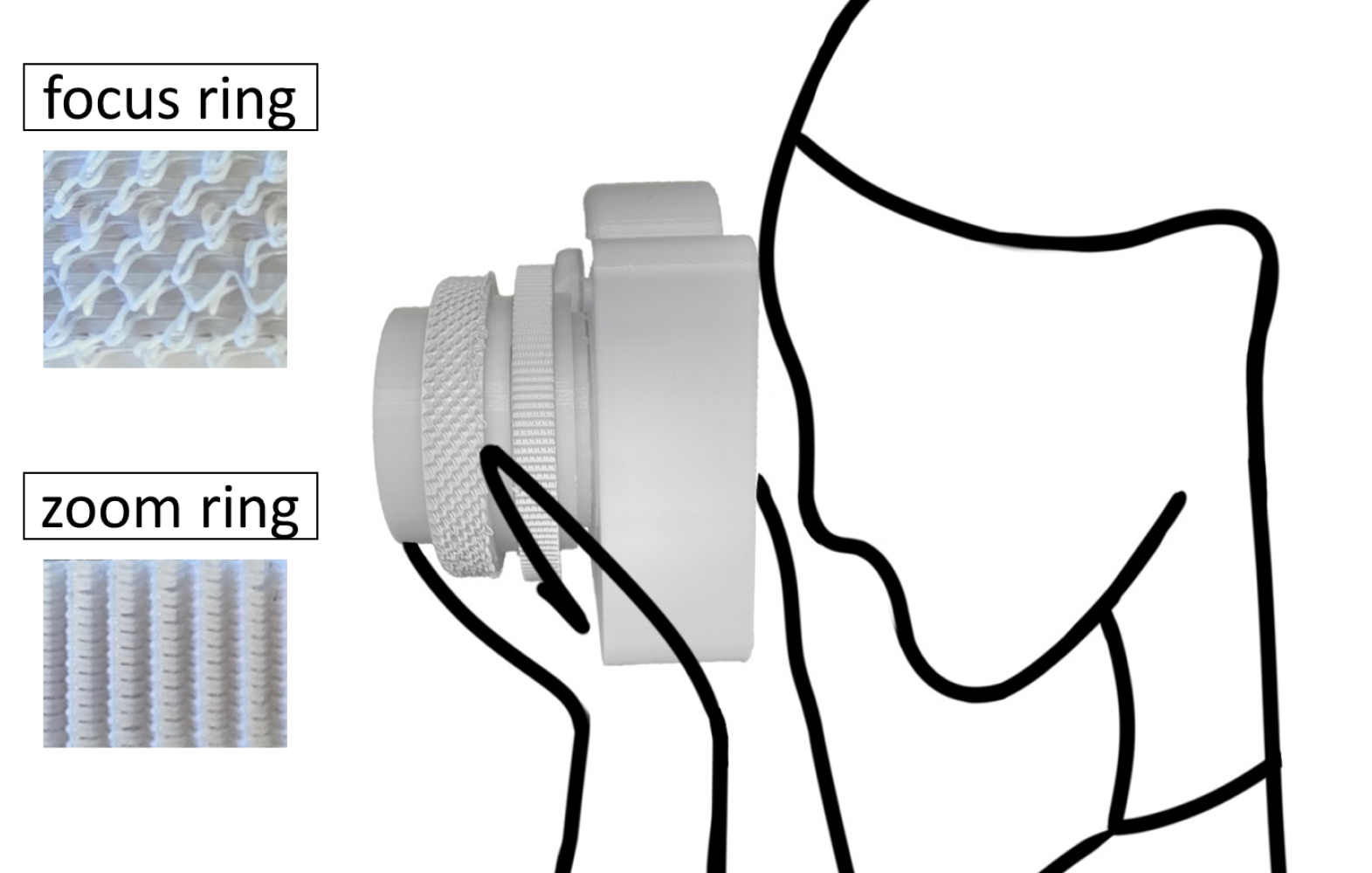
Background Prior methods for applying auto-generated textures on a 3D model involve the construction of geometric feature layers on the top of the model surface. These geometries form a textural pattern that is effectively fused and inseparable from the underlying object. However, this interconnection makes it challenging to facilitate follow-up adjustments of the 3D model during the design process without necessitating the remodeling of parts, leading to a cumbersome process for designers and engineers.
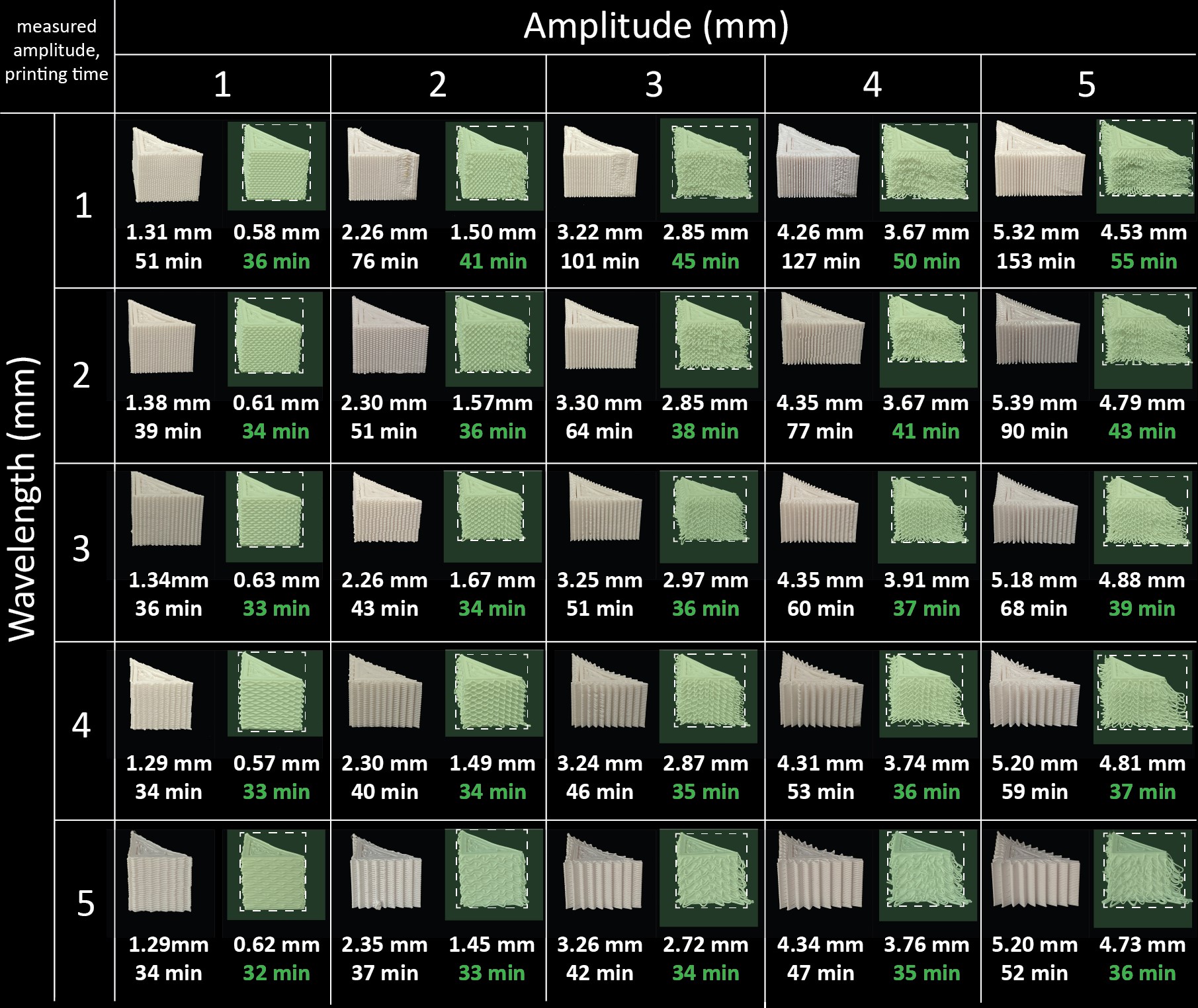
Methods In this paper, we present Texture-Slicer , an innovative approach that addresses this issue by applying the texture patterns not during modeling, but instead during the slicing process conducted before 3D printing. This means that the 3D model remains unchanged and that a tunable texture pattern is achieved by injecting modifications of the G-code just before the printing process. Furthermore, Texture-Slicer allows users to control the level of roughness with the texture parameters (wavelength, amplitude, and vertical spacing), supporting the creation of numerous custom textures for the same underlying geometry.
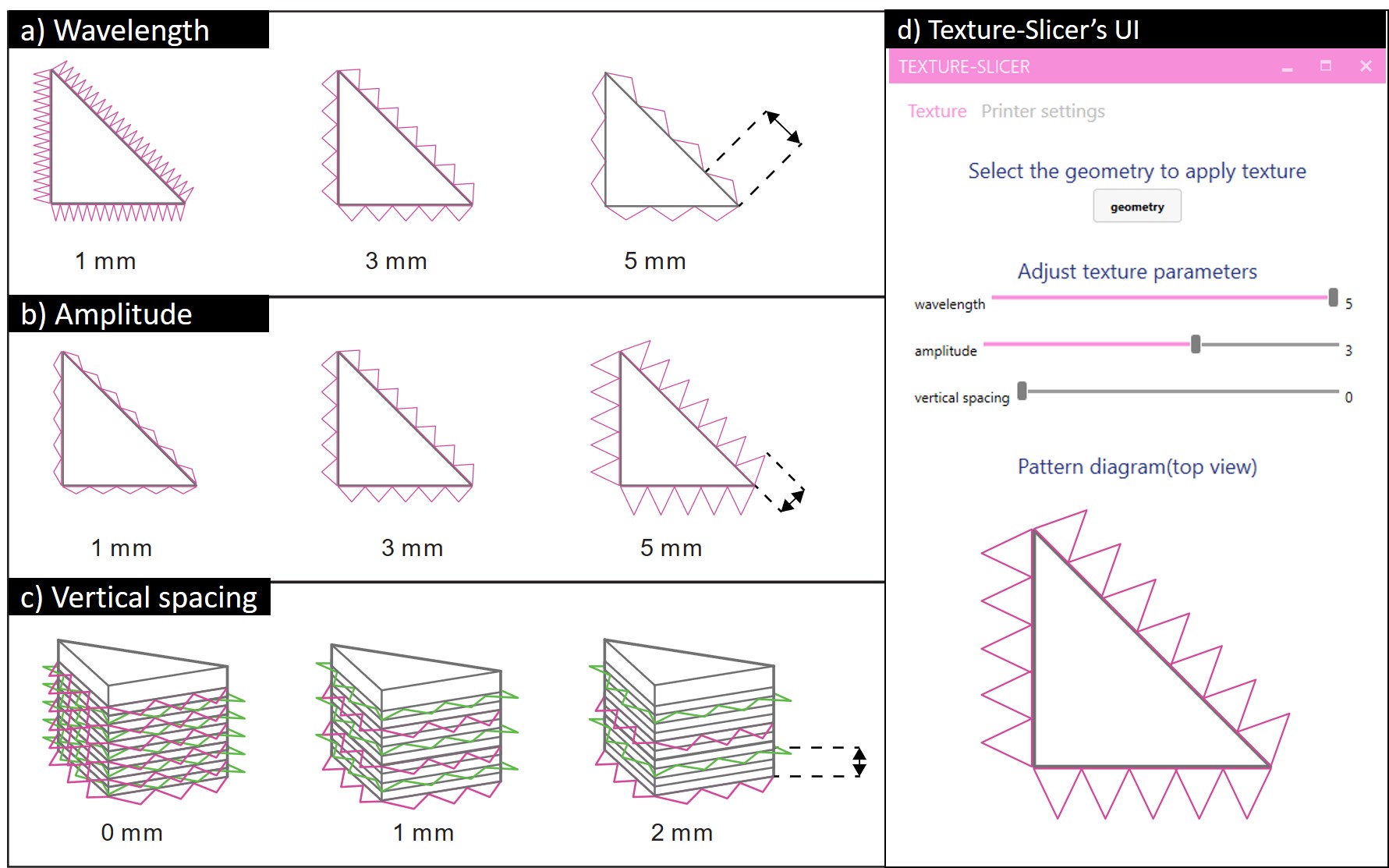
Results Technical evaluation of paradigms was conducted with 30 test samples. Then, a total of 59 texture samples were successfully printed, and an investigation of roughness perception was conducted through a preliminary user study involving 6 participants who evaluated 50 printed samples. The findings indicate that increased wavelength and amplitude created more roughly perceived textures. With vertical spacing, wavelength did not affect the perceived roughness of the texture, while amplitude did affect. Moreover, we presented practical applications that exemplify how Texture-Slicer can be used by designers to generate diverse textures for identical objects to achieve different aesthetic or functional purposes.
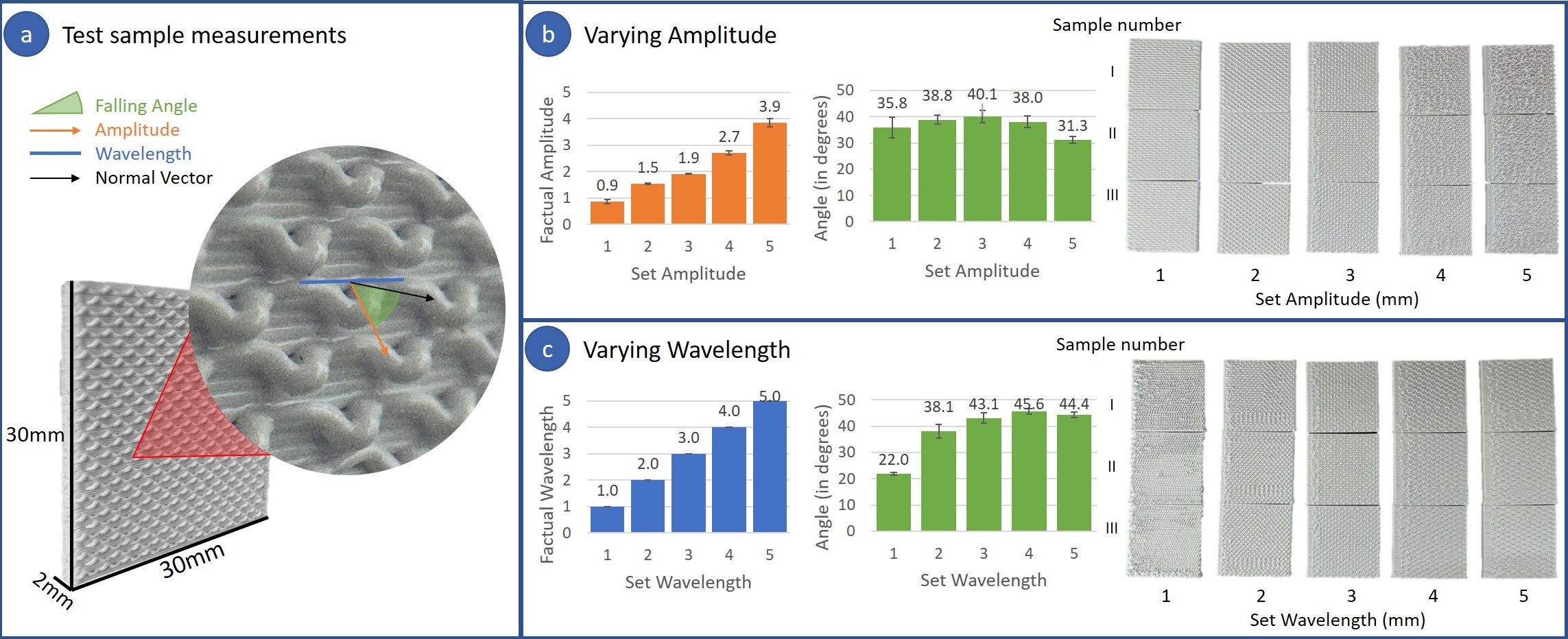
Conclusions Texture-Slicer allows designers to achieve rapid iterations and seamless texture modifications on objects without the necessity of remodeling the underlying 3D model. while enabling the encoding of various properties, such as tactile or mechanical attributes into products, all without altering the target 3D model’s surface.
Authors: Zofia Marciniak, Kongpyung Moon, and Andrea Bianchi https://www.dbpia.co.kr/journal/articleDetail?nodeId=NODE11791232
